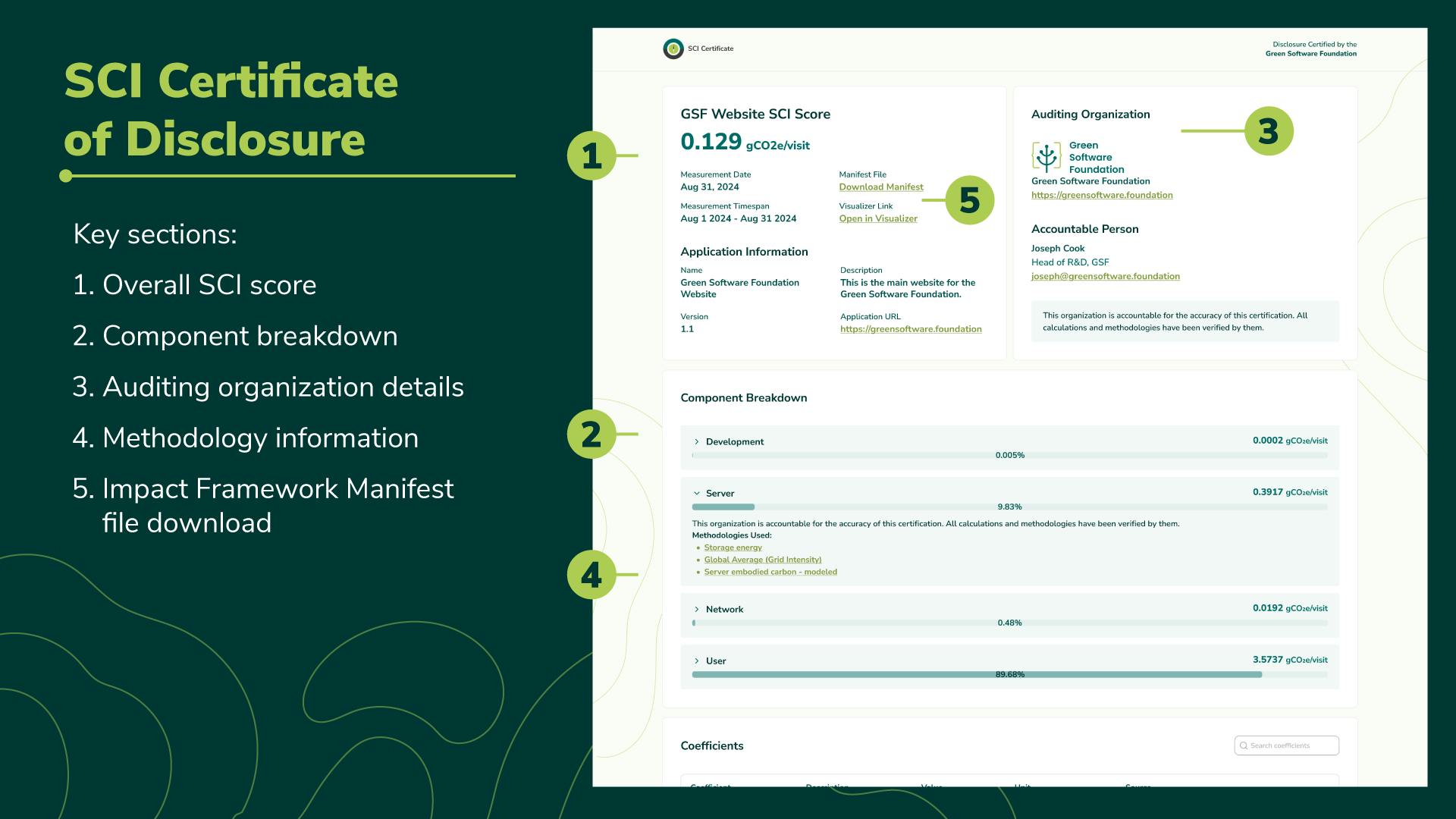In recent years, we've seen growing momentum across industries to measure and reduce the carbon impact of software. Governments, companies, and researchers are increasingly aligned in their goal to drive meaningful sustainability outcomes. Yet a common barrier persists: software carbon data isn’t easily available, especially across the supply chain.
Although the Software Carbon Intensity (SCI) specification provides a clear, standardized method for calculating software emissions, many organizations remain stuck. Without a straightforward way to access supplier emissions data, most are left relying on estimates or proxy measures.
This limits the quality of carbon accounting, slows methodological progress, and prevents organizations from making confident, informed decisions about their software’s environmental impact.
What SCI Certification of Disclosure Means for Green Software
Over the past year, we’ve worked closely with our members and partners to better understand the barriers organizations face when implementing SCI. While technical tools are available, what’s missing is systemic support for sharing data transparently.
We identified three key challenges:
Disclosure Gap: Software products, especially those built on layers of APIs, cloud services, and proprietary systems, rarely provide emissions data. Without upstream visibility, downstream organizations must estimate the environmental impact of their entire software supply chain.
Methodological Uncertainty: While SCI outlines a consistent framework, organizations are often unsure how to apply it in practice. Without access to public methodologies or shared examples, teams must develop their own approach, leading to duplication and inconsistency.
Limited Research Access: Academic researchers building emissions models frequently rely on synthetic data. Without access to real-world disclosures, their ability to improve the science behind green software remains limited.
A Disclosure-First Solution
We’re exploring a new way to move the industry forward: starting with voluntary, structured, self-reported disclosure. Rather than waiting for full certification programs to mature, we believe there’s immediate value in recognizing transparency as a foundational step.
By encouraging organizations to publish their SCI scores, along with their input boundaries, data sources, and methodologies, we can build the shared knowledge base needed for meaningful progress.
This approach unlocks two valuable feedback loops:
Supply Chain Accuracy: As more software suppliers share their SCI data, their customers can replace estimates with real values. This helps create a more accurate and connected view of emissions across the ecosystem.
Methodological Learning: Public disclosures provide much-needed insights for academic researchers and peer organizations. Access to real-world data supports iterative improvements to the SCI framework and enables the development of tools and best practices.

Building on Our Values
This approach reflects our mission to build a trusted, transparent ecosystem that enables measurable change. By creating a structure that supports disclosure, we’re helping organizations take a meaningful first step toward carbon accountability, without requiring them to have all the answers upfront.
We’ve also seen firsthand how eager many of our member organizations are to contribute. Enabling recognition for openness today helps build confidence, encourage adoption, and foster knowledge-sharing across the industry.
Tools such as the Impact Framework and community-contributed resources continue to make SCI measurement more accessible. A certification rooted in transparency would mark a new chapter in software measurement adoption.
What’s Next
We’re in the early stages of exploring how structured disclosure could be recognized and supported, but its potential impact is significant.
A disclosure-first approach wouldn’t replace formal certification programs; it would make them possible by building the empirical foundation they require. Organizations would receive immediate recognition for their transparency while contributing to the collective knowledge that advances the entire field.
As we continue to shape this work, we remain committed to openness about our own process. We’re learning alongside our community and welcome feedback and collaboration from organizations ready to take the first step toward transparent software measurement.
Together, we can drive the future of green software forward, powered by transparency, collaboration, and shared progress.
The Green Software Foundation is led by global leaders in technology and sustainability, including Avanade, BCG X, Cisco, Google, Microsoft, NTT DATA, Siemens, and UBS. To align with our work and help shape the adoption of software sustainability standards, consider becoming a member.
This article is licenced under Creative Commons (CC BY 4.0)
